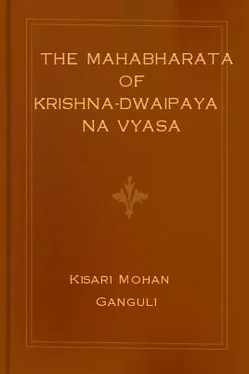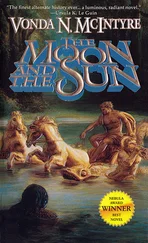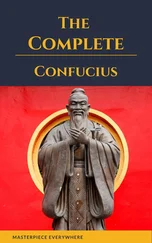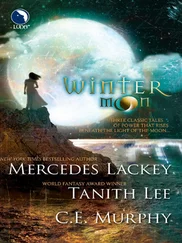Kisari Mohan Ganguli - The Mahabharata of Krishna-Dwaipayana Vyasa
Здесь есть возможность читать онлайн «Kisari Mohan Ganguli - The Mahabharata of Krishna-Dwaipayana Vyasa» весь текст электронной книги совершенно бесплатно (целиком полную версию без сокращений). В некоторых случаях можно слушать аудио, скачать через торрент в формате fb2 и присутствует краткое содержание. Издательство: ManyBooks.net, Жанр: на английском языке. Описание произведения, (предисловие) а так же отзывы посетителей доступны на портале библиотеки ЛибКат.
- Название:The Mahabharata of Krishna-Dwaipayana Vyasa
- Автор:
- Издательство:ManyBooks.net
- Жанр:
- Год:неизвестен
- ISBN:нет данных
- Рейтинг книги:3 / 5. Голосов: 1
-
Избранное:Добавить в избранное
- Отзывы:
-
Ваша оценка:
- 60
- 1
- 2
- 3
- 4
- 5
The Mahabharata of Krishna-Dwaipayana Vyasa: краткое содержание, описание и аннотация
Предлагаем к чтению аннотацию, описание, краткое содержание или предисловие (зависит от того, что написал сам автор книги «The Mahabharata of Krishna-Dwaipayana Vyasa»). Если вы не нашли необходимую информацию о книге — напишите в комментариях, мы постараемся отыскать её.
The Mahabharata of Krishna-Dwaipayana Vyasa — читать онлайн бесплатно полную книгу (весь текст) целиком
Ниже представлен текст книги, разбитый по страницам. Система сохранения места последней прочитанной страницы, позволяет с удобством читать онлайн бесплатно книгу «The Mahabharata of Krishna-Dwaipayana Vyasa», без необходимости каждый раз заново искать на чём Вы остановились. Поставьте закладку, и сможете в любой момент перейти на страницу, на которой закончили чтение.
Интервал:
Закладка:
454. The Ekaratra, Pancharatra, and Ekadasaratra, sacrifices consist of fasts and gifts for the periods indicated by the names, viz., one night, five nights, and eleven nights.
455. 'Golden moons' imply those well-carved and beautifully fringed discs of gold that are worn by Hindu ladies on the forehead and that hang by thin chains of gold attached to the, hair. In Bengal, ladies of respectable houses wear a kind of ornament called 'Chandrahara' or the moon-wreath. This ornament is worn round the waist, on the hip. Several chains of gold, from half a dozen to a dozen, having a large disc of well-carved gold to which they are attached, constitute this really very beautiful ornament. The disc is divided into two halves, attached to each other by hinges, so that in sitting down, the ornament produces no inconvenience.
456. In the Santi Parva it has been explained that in ancient times kings sometimes performed sacrifices causing altars to be raised at small distances from one another. These distances were measured by hurling a heavy piece of wood called Sami, so that throwing the Sami from one altar, the next altar would be created upon the spot where it fell.
457. i.e. if a sinful man mends his conduct, he succeeds in warding off the misery and evils to which he would otherwise be subject in consequence of his sins.
458. What is said here is this; certain persons have the ugly habit of picking up little clods of earth and pound them into dust, while sitting on the ground and engaged in talking. The habit also of tearing the grass while sitting on the ground may be marked. It should be remembered that the people of India in ancient times used often to sit on the bare ground. As to cutting off the nails with the teeth, it is an ugly habit with many young men.
459. The Brahma Muhurta is that when the sun is just below the horizon.
460. The prayers said in the morning and the evening are also spoken of as adoring the two twilights.
461. 'One should always observe the vow of Brahmacharya' means that one should abstain from sexual congress except with one's wedded wives and in the proper season.
462. The Bombay text reads the second line differently. What is meant, is that the wounds inflicted by wordy shafts rankle and fester and lead to death.
463. Samyava is a thin cake of unleavened bread, fried with ghee, pounded and again made up into an oblong form with fresh bread, sugar and spices, and again fried with ghee. Krisara is a kind of liquid food made of milk, sesame, rice, sugar, and spices. Sashkuli is a kind of pie. Payasa is rice boiled in sugar and milk.
464. Antarddhane implies 'in darkness'; hence one should always examine the bed with a light before one lies down on it.
465. Pranan, the commentator explains, implies the upper holes of the body, such as the nostrils, the ear-holes and, the eyes.
466. The Brahmana is more powerful than the other two, for while the other two cannot injure except when they have, their foe within sight, the Brahmana can do so even by not seeing his enemy.
467. The custom in India, with especially all orthodox Brahmanas, is to wear a single flower on the head, inserted into the coronal lock. This flower may be a red one, it is said, after the prohibition in the previous verse about the wearing of garlands made of red flowers.
468. What is stated here is that dry perfumes should not be used, but those which are pounded with water and made into a paste.
469. The cloth worn by a Hindu has two lateral fringes which contain a lesser number of threads than the body of the cloth.
470. It has been said that Hinduism is a vast system of personal hygiene. These directions about change of attire are scrupulously observed by every rigid Hindu to this day. No change seems to have taken place in the daily habits of the people.
471. Priyangu is the Aglaia Roxburghiana. Vilwa is the Egle marmelos. Tagara is the Taberuaemontana coronaria, Linn. Kesara is probably the Eclipta alba, Hassk.
472. Na is the nom, sing. of Nri, implying man.
473. One of the Vernacular translations takes valena as signifying child and para-sraddha as meaning the first or adya sraddha.
474. This noise refers to that of chewing or sucking or licking, etc. It is an ugly habit with some people.
475. Doubting, for example, as to whether he would be able to digest it or not, or whether what he is taking is clean or not, or whether it would be too much for him.
476. In offering certain articles at the Sraddha, the articles are first placed on this part of the right hand and then offered with due Mantras to the Pitris.
477. The achamana is not exactly washing, when one is directed to perform the achamana after having eaten, there it, of course, implies an act of washing. At the commencement, however, of religious acts, the rite of achamana consists in merely touching the lips and some other parts with water.
478. The Brahmana's aid is necessary in selecting the ground, and settling the longitudinal and other directions of the house, as also in fixing the day of commencing the work of building.
479. I adopt the meaning which Nilakantha points out. According to him, this verse forbids the killing of birds at night time and their killing after having fed and adopted them. Indeed, one may buy such birds killed by others for food. The word Dwija, however, may mean both hair and nails. The first part of the line, therefore, may be taken as a prohibition against the cutting of hair and nails after eating. The words na samarcha reta, in that case, would be difficult to interpret. Probably, it is this that has led the commentator to take Dwija here for a bird. Some texts read panam for na cha.
480. Pravaras indicate the race in which one is born. They are named from the names of the Vedic Rishis.
481. The commentator explains that ayonim implies of unknown birth and viyonim of mean birth.
482. Brahmanih here refers to the rituals in the Vedas and not persons of the first order.
483. The fact is, one is directed to bathe after a shave. One is considered impure after a shave until one bathes.
484. Uddesa means, as the commentator explains, in brief.
485. The word rendered conduct in the concluding verse of this lesson is acharah. It implies not only one's behaviour to one's own self and others, i.e., to beings inferior, equal, and superior. The word acharah, therefore, includes the entire body of acts that one does in this life, including the very sentiments that one cherishes.
486. The flower of the cane cannot be plucked for being offered to the deities.
487. An Acharya is an ordinary instructor. He is called an Upadhyaya who teaches the Vedas. The Upadhyaya is greater than even ten Acharyas or ordinary teachers. The father, again, deserves ten times as much respect as is paid to the Upadhyaya. As regards the mother, again, the reverence due to her is greater than what is due to the father. The mother is equal to the whole earth.
488. Many of the verses of this Lesson are from Manu. The relative positions of the Acharya, the Upadhyaya, the father, and the mother, as given in verse 15, is not consistent with Manu. verse 15 would show that the Upadhyaya was regarded as very much superior of the Acharya. In Manu, II--140-41, he is called an Acharya who taught all the Vedas, without any remuneration. He, on the other hand, who taught a particular Veda for a living, was called an Upadhyaya. The first line of verse 19 corresponds with Manu, II--148. The sense is that that birth which one derives from one's parents is subject to death; while the birth derived from the preceptor is true regeneration, unfading and immortal. It is a question whether any other nation paid such respect to persons employed in teaching.
489. Kanchi is an ornament worn by ladies round the waist or hips. There is a shining disc of gold or silver, which dangles on the hip. It is commonly called Chandra-hara. The Nupura is an anklet of silver, with moving bullets placed within, so that when the wearer moves, these make an agreeable sound.
Читать дальшеИнтервал:
Закладка:
Похожие книги на «The Mahabharata of Krishna-Dwaipayana Vyasa»
Представляем Вашему вниманию похожие книги на «The Mahabharata of Krishna-Dwaipayana Vyasa» списком для выбора. Мы отобрали схожую по названию и смыслу литературу в надежде предоставить читателям больше вариантов отыскать новые, интересные, ещё непрочитанные произведения.
Обсуждение, отзывы о книге «The Mahabharata of Krishna-Dwaipayana Vyasa» и просто собственные мнения читателей. Оставьте ваши комментарии, напишите, что Вы думаете о произведении, его смысле или главных героях. Укажите что конкретно понравилось, а что нет, и почему Вы так считаете.












